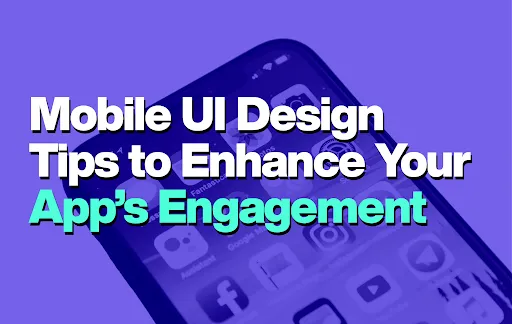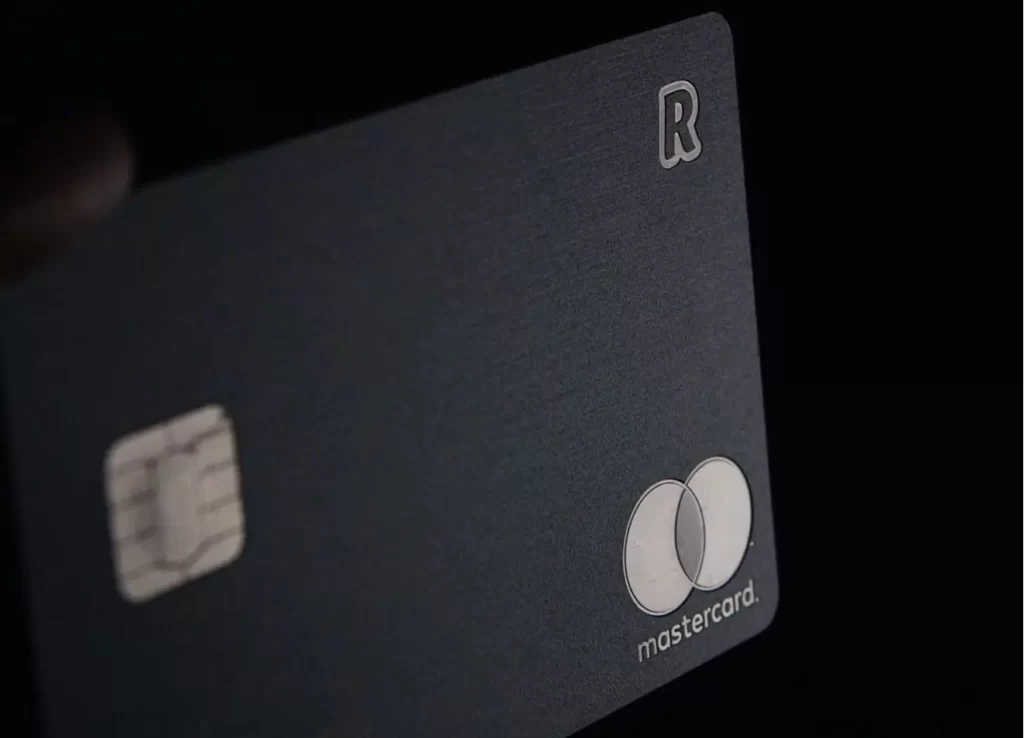Having a beautiful website isn’t enough—it must also generate revenue and support your business goals. Whether you’re a startup or an established brand, implementing website design practices for high ROI can mean the difference between average results and consistent growth. A well-optimized, user-friendly site not only captures attention but also drives conversions, helping you scale faster and smarter.
This guide dives deep into the top web design strategies that increase conversion rates, boost website performance, and turn casual visitors into loyal customers. From clean UI/UX practices to responsive layouts and SEO-friendly structures, we’ll cover everything you need to know to build a highly profitable website.
Why Web Design Directly Impacts Website Profitability
The Relationship Between Web Design and Conversion Rates
Your website’s design sets the stage for how visitors interact with your content. A site that is intuitive, visually appealing, and easy to navigate increases user trust and time spent on the site—two critical indicators that impact conversion rate optimization (CRO). A cluttered layout or confusing user journey, on the other hand, pushes visitors away before they even read your value proposition.
Modern web design best practices emphasize clarity, simplicity, and speed. When your design is centered around these principles, it encourages users to take action—whether that’s signing up for a newsletter, requesting a quote, or making a purchase.
How User Experience Affects Website Revenue
UX in web development is more than just aesthetics—it’s about creating a seamless experience that reduces friction and builds confidence. A positive user experience leads to more conversions, improved customer satisfaction, and better retention rates. By focusing on web usability, businesses can maximize their returns from every site visit.
Elements like responsive design, intuitive forms, clear messaging, and strong CTAs contribute significantly to high-converting website design. In fact, even small tweaks in layout or CTA placement can have a measurable impact on your bottom line.
Core Elements of Profitable Website Design
Visual Hierarchy and Intuitive Website Structure
To keep users engaged, your website must guide their attention effortlessly. A strong visual hierarchy—created using font sizes, colors, spacing, and contrast—helps users scan content easily and understand what actions to take. Structuring your pages with the right content flow and page architecture ensures visitors find what they’re looking for without frustration.
High-Converting Layout and Clean Navigation
An optimized layout eliminates distractions and encourages users to act. Clean navigation helps users explore your site without feeling lost. This enhances user engagement and supports your conversion strategy. Clear menus, breadcrumbs, and sticky headers are just a few techniques that aid navigation and increase usability.
The Importance of Mobile-Friendly Design
With over half of global traffic coming from mobile devices, mobile-responsive design is non-negotiable. Your website must adapt flawlessly to different screen sizes to provide a seamless experience. Google also prioritizes mobile-first indexing, so ignoring mobile usability can hurt your search engine rankings.
Fast-loading mobile pages, tap-friendly buttons, and optimized content layout for smaller screens are all crucial elements of mobile-friendly website design. Not only does this improve engagement—it directly supports SEO and conversion goals.
Optimizing Website Performance for Profitability
Site Speed and Its Impact on Conversions
Speed is more than a luxury—it's a necessity. A delay of even a single second in page load time can significantly reduce conversions. That's why website performance optimization is one of the most important web design practices for high ROI.
Visitors expect instant access. A slow-loading site increases bounce rates and damages your brand’s credibility. Tools like Google PageSpeed Insights and GTmetrix can help analyze and fix speed-related issues. Optimizing images, minifying CSS and JavaScript, and using lightweight themes are all essential to improve load times.
Mobile Performance Optimization
With mobile devices accounting for the majority of traffic, mobile site speed directly affects your mobile conversion rate. Ensure that mobile pages load quickly, scripts are optimized, and elements are properly scaled. This not only supports your mobile-first design strategy but also aligns with Google's Core Web Vitals—a key factor in SEO-friendly web design.
Section 4: Leveraging SEO-Driven Design for Long-Term Gains
SEO-Friendly Web Design Principles
A profitable website isn't just designed for users—it’s also optimized for search engines. Search engine-friendly design means using clean code, structured data, and semantic HTML that allows search engines to crawl and index your content effectively. From header tags to metadata and internal linking, every element should support your on-page SEO strategy.
Using Schema Markup and Structured Data
Implementing structured data (or schema markup) helps search engines understand your content better and can result in rich snippets—which improve CTR (click-through rate) in search results. Whether you’re showcasing products, reviews, or FAQs, schema markup enhances visibility and drives more traffic to your site.
Mobile-First Indexing and Technical SEO Integration
Google now uses mobile-first indexing, which means it prioritizes the mobile version of your website for ranking and indexing. Your design must therefore be mobile-optimized, fast, and fully functional. Integrating technical SEO into your design workflow ensures you're not just creating a visually appealing site—but one that performs well in search too.
Conversion-Focused UX and UI Design
Intuitive Navigation and Layout
A high-converting website begins with an intuitive layout. Users should be able to find what they’re looking for with minimal effort. Incorporate user-friendly web layouts that align with modern web design trends. Use clear CTAs (calls to action), simple menus, and logical page structures to guide users through a seamless journey—from landing to conversion.
This strategy not only boosts user engagement but also reduces bounce rate, which is a crucial metric in conversion rate optimization (CRO). Proper UX design for lead generation ensures every visitor has a frictionless experience that encourages action.
Emotional Design and Trust Signals
Emotions influence buying behavior. Using visual hierarchy, color psychology, and authentic imagery can help create an emotional connection with users. In addition, include trust-building elements such as testimonials, security badges, and partner logos to instill confidence. These subtle details often result in improved ROI through web design.
Data-Driven Design and Continuous Optimization
Tracking User Behavior with Analytics
To build a truly data-driven website, integrate platforms like Google Analytics and Hotjar. These tools reveal how users interact with your site—what they click, where they linger, and when they leave. Use this data to identify bottlenecks and opportunities to improve. Analytics is key to effective website conversion tracking.
A/B Testing and Conversion Optimization
No design should be static. Run A/B tests on key landing pages, CTAs, and layouts to determine what works best. A simple tweak—like changing button colors or repositioning a headline—can significantly improve performance. A/B testing is a staple of high-converting web design that helps drive continual growth.
Aligning Design with Business Goals
Every design element should have a purpose. Whether the goal is to generate leads, increase e-commerce sales, or raise brand awareness, your website must support it. A website built with conversion optimization best practices ensures that design and business strategy are aligned for long-term profitability.
Responsive Design: Key to Website Success
In today’s digital world, your website’s ability to perform across multiple devices is not just a bonus—it’s a necessity. With mobile traffic surpassing desktop usage, ensuring that your website is mobile-responsive is one of the most important steps you can take for your business. As a web design company, GO-Globe understands the importance of creating websites that offer smooth user experiences regardless of the device being used. Here's how responsive design can lead to better engagement, higher conversion rates, and a stronger online presence.
Responsive design refers to the practice of building a website that adapts its layout and content to fit various screen sizes. It’s more than just mobile-friendly; it ensures that the experience is optimized across all devices—whether it’s a smartphone, tablet, or desktop.
Why Mobile-First Design Matters
With mobile-first design, the focus is on creating the best possible experience for users on mobile devices before scaling up to larger screens. This design philosophy has become essential due to the increasing amount of web traffic generated by mobile users. It’s no longer enough to simply make sure your website works on a smartphone; it has to function flawlessly on all mobile devices.
A mobile-first approach forces designers to prioritize simplicity and speed, ensuring that the website loads quickly and functions smoothly on all devices. This directly impacts the mobile user experience (UX) and can dramatically increase user retention rates.
Mobile Responsiveness: A Competitive Advantage
Mobile responsiveness isn’t just about making text readable on small screens—it’s about making your entire website adaptable. Whether it's your homepage, product pages, or blog posts, mobile responsiveness ensures that users get the same experience on their phones or tablets as they would on a desktop. For example, navigation elements, buttons, and images should adjust to fit mobile screens without causing any confusion or frustration.
GO-Globe emphasizes that a well-optimized mobile site doesn’t just look good—it works well, too. Responsive design optimizes page load speeds, making your site faster for mobile users, which is a crucial factor for SEO rankings and user satisfaction.
Adaptive Design: Balancing Aesthetics and Functionality
While mobile-first design focuses on simplicity, adaptive design goes a step further by adjusting not just the layout, but also the content based on the user’s device and screen size. This flexibility allows for a more tailored experience and can help you highlight key content in ways that appeal to different audiences across devices.
For example, large images and videos might be displayed differently on a mobile screen compared to a desktop, improving page load times and reducing bandwidth consumption. The goal is to enhance the user experience without sacrificing aesthetics.
Cross-Device Compatibility: Reaching a Broader Audience
Your potential customers could be browsing your site from a variety of devices—smartphones, laptops, tablets, or even smart TVs. Cross-device compatibility ensures that regardless of how users access your site, they will receive the same high-quality experience. From a business standpoint, this adaptability opens the door to a broader audience, improving your chances of converting visitors into loyal customers.
The key is designing with flexibility in mind, ensuring that each element of your website responds appropriately to the device being used. The layout, typography, and content should all adjust in a way that maintains a seamless and user-friendly experience.
Mobile Optimization for Higher Traffic and Conversions
Mobile optimization goes beyond simple responsiveness. It also involves optimizing page speed, minimizing unnecessary elements, and making your site more intuitive for mobile users. According to recent statistics, websites that are optimized for mobile are more likely to attract and retain traffic, leading to higher conversion rates.
By optimizing your site for mobile users, you are directly addressing their needs and ensuring they can navigate your site quickly and easily. At GO-Globe, we focus on creating responsive designs that help your business stand out in an increasingly mobile-driven world. As mobile traffic continues to grow, those who prioritize mobile optimization will stay ahead of the competition.
Maximizing Conversion Rates Through Design
If you’ve built a website, you know that the ultimate goal is not just to attract visitors but to convert them into customers. Yet, many businesses focus on traffic without considering how to guide users toward taking action once they arrive on the site. GO-Globe understands that even small changes in design can significantly boost your website's ability to convert visitors. Let’s dive into how effective design choices can maximize your conversion rates and turn your site into a powerful sales tool.
Conversion Rate Optimization (CRO): Why It Matters
Conversion Rate Optimization (CRO) is all about improving your website to ensure that more visitors take the desired action—whether that’s signing up for a newsletter, making a purchase, or contacting you for more information. It’s not just about getting traffic; it’s about turning that traffic into real, measurable results. CRO focuses on small, data-driven adjustments that make big impacts over time.
At GO-Globe, we understand that even a slight increase in your conversion rate can have a major impact on your bottom line. Optimizing your website's design with CRO in mind helps increase the effectiveness of every visit, boosting sales, leads, and user engagement without necessarily increasing your traffic.
The Importance of Call-to-Action (CTA) Design
A well-designed Call-to-Action (CTA) is often the difference between a visitor browsing your website and a visitor becoming a customer. Your CTAs should be strategically placed, clear, and enticing. Whether it’s “Buy Now,” “Get a Free Quote,” or “Sign Up for Our Newsletter,” the design of these buttons plays a key role in conversion rates.
Effective CTA design involves more than just choosing the right text. It’s about visual hierarchy, color contrast, placement, and functionality. When users know exactly where to click, and are urged with action-oriented language, they are more likely to follow through. GO-Globe ensures that your CTAs are easy to find and match the overall design of your site, encouraging visitors to take action.
User Behavior Analysis: Understanding Your Visitors
To improve conversion rates, you need to understand what your users are doing on your website. User behavior analysis helps you identify where visitors drop off, what pages they spend the most time on, and what actions they take—or fail to take.
Using tools like heatmaps and session recordings, GO-Globe helps you track how users interact with your site, allowing us to pinpoint areas of friction or confusion. By analyzing this data, you can make informed decisions about design changes that will enhance the user experience and encourage more conversions.
A/B Testing for Design: Test, Learn, Improve
A/B testing is one of the most effective ways to optimize your website's design for conversions. This process involves testing two different versions of a webpage to see which one performs better. By tweaking one element at a time—whether it’s the color of your CTA buttons, the layout of your homepage, or the wording of your product descriptions—you can make data-backed decisions about design changes that drive results.
GO-Globe uses A/B testing to ensure that every design decision is based on solid evidence rather than guesswork. It’s a continuous process of testing and learning that helps you fine-tune your website to meet the specific needs of your audience.
Lead Generation Through Design
Great web design is more than just about selling—it’s about building a relationship with your audience. By incorporating lead-generation strategies into your design, you can capture valuable information from visitors who may not yet be ready to purchase but could become customers down the road.
This could include designing attractive, high-converting lead magnets such as free ebooks, webinars, or consultations, all strategically placed throughout your site. GO-Globe ensures that your lead generation efforts are optimized and that every interaction with your website brings you closer to gaining a loyal customer.
Conversion-Focused Web Elements: Simplifying the Path to Purchase
Every element on your website should guide visitors toward the ultimate goal: conversion. Conversion-focused web elements like clear navigation, fast-loading pages, and intuitive layouts make it easier for visitors to move through the website funnel and take action. These elements need to be strategically placed so that the path to conversion feels natural and simple.
At GO-Globe, we focus on streamlining the user journey from the first visit to the final conversion. By reducing unnecessary steps and distractions, we create a website that’s designed to turn interest into action.
Website Funnel Optimization: From Visitor to Customer
The website funnel is the journey a visitor takes from their first interaction with your website to becoming a paying customer. Funnel optimization focuses on ensuring that each step in this journey is as efficient and effective as possible. From the moment a user lands on your site to the point where they check out, every step should be designed to guide them toward taking action.
At GO-Globe, we help you create optimized funnels that move users through the process smoothly. Whether it's simplifying forms, reducing checkout friction, or providing clear next steps, we ensure that the conversion journey is as streamlined as possible.
The Power of White Space in Web Design
When it comes to web design, many people focus on making the site content rich, ensuring that every inch of the page is filled with something valuable. But what if I told you that the spaces between your content could be just as powerful as the content itself? White space—also known as negative space—may seem like just an aesthetic choice, but it plays a critical role in user experience, readability, and even conversion rates.
At GO-Globe, we know that effective use of white space can make the difference between a site that feels cramped and overwhelming and one that feels clean and organized. Let’s take a closer look at how the strategic use of white space can improve your website’s design and, in turn, its performance.
Minimalist Web Design: Less is More
Minimalist web design is built on the idea that less is more. This approach emphasizes clean, simple layouts that don’t overwhelm the user with unnecessary elements. By removing clutter and focusing on only the most important features, minimalist design creates a pleasant and easy-to-navigate experience.
When combined with white space, minimalist design helps guide the user’s attention where it matters most. Instead of having their eyes dart from one element to another, visitors can easily focus on the content that truly matters, whether it’s a call-to-action, an important offer, or essential information.
At GO-Globe, we specialize in creating minimalist designs that maintain functionality while ensuring that users can interact with your site without distractions. This approach not only enhances usability but can also boost conversion rates by creating an environment that feels less overwhelming.
Negative Space in Design: Enhancing Visual Balance
Negative space, often used interchangeably with white space, is the area surrounding the content of your website. It’s not just about leaving areas blank—it’s about creating a balanced visual hierarchy that makes the content easier to digest and more visually appealing.
Proper use of negative space allows for the clear separation of content, making your website feel organized and tidy. It helps the user focus on one section at a time, preventing them from feeling lost or distracted. By giving your design breathing room, you enable a smoother and more engaging user experience.
For example, large images, text blocks, and buttons can be separated by strategic negative space, making each element stand out clearly without feeling cramped. GO-Globe emphasizes the importance of this design principle to create web pages that feel comfortable to browse and use.
Clean Website Design: A Fresh, Easy-to-Navigate Experience
A clean website design is a natural extension of good white space usage. It’s about keeping the design neat, with no unnecessary clutter or distractions. A clean design isn’t just about aesthetics—it directly impacts usability and conversion rates.
By maintaining a clean layout, users are less likely to become frustrated or overwhelmed by a cluttered interface. Instead, they can easily navigate the site and find what they’re looking for. This leads to a better user experience, higher engagement, and more conversions.
At GO-Globe, we prioritize clean website designs that use white space effectively, ensuring that your visitors’ journey through your site is simple and enjoyable. The result? Increased time spent on site, lower bounce rates, and improved conversion opportunities.
Visual Hierarchy: Guiding the User’s Eyes
White space is a key tool in establishing a strong visual hierarchy. Visual hierarchy helps users navigate your site by clearly defining what content is most important. By adjusting the spacing around different elements—such as headings, text, images, and buttons—you can guide users’ attention in a natural and intuitive way.
For example, larger headlines with more space around them tend to catch the user’s eye first, followed by smaller elements like body text or buttons. White space ensures that users don’t feel overwhelmed by a wall of text or images, making it easier for them to process information in a structured way.
GO-Globe applies this principle to create websites where the layout intuitively guides the user from one section to the next, enhancing overall usability and engagement.
User Interface (UI) Clarity: Simplifying Interaction
White space plays a crucial role in UI design, where clarity is key. A well-organized user interface (UI) with ample spacing ensures that interactive elements—like buttons, forms, and links—are easy to find and use. When these elements are spaced out properly, it reduces the chances of accidental clicks or confusion, making the interface more intuitive.
This clarity improves not only usability but also accessibility. By ensuring that each interactive element has enough space around it, you make your site easier to navigate for users of all abilities. At GO-Globe, we understand that clarity in design is vital to keeping visitors engaged and reducing frustration.
Efficient Content Layout: Prioritizing Important Information
White space isn’t just about creating room—it’s about prioritizing content and making sure that the most important information stands out. A well-organized layout, combined with effective use of white space, allows you to highlight key messages, calls-to-action, or promotional offers without overwhelming the user.
For example, placing your primary CTA button in a prominent spot with plenty of surrounding space ensures that users know exactly where to click. Similarly, white space helps create logical groupings of related content, making it easier for users to digest information in bite-sized pieces.
At GO-Globe, we focus on building content layouts that balance aesthetics with functionality, ensuring that the most important content is easy to find and act upon.
Aesthetics of Whitespace: Creating a Modern Look
Whitespace isn’t just a functional design element—it’s also crucial for the aesthetic appeal of your website. A design with ample white space feels modern, fresh, and visually pleasing. It makes the site feel less cluttered and more sophisticated, which can positively influence how visitors perceive your brand.
By using white space strategically, your website will convey a sense of professionalism and attention to detail, reflecting positively on your brand’s image.
Typography: Enhancing Readability and Engagement
When it comes to web design, typography often takes a backseat to other visual elements. However, the right typography can make or break your website's success. It’s not just about choosing a pretty font—it’s about creating a seamless reading experience that engages users and encourages them to stay on your site longer. At GO-Globe, we understand how impactful typography can be for both user experience and conversion rates.
Web-Safe Fonts: A Must-Have for Consistency
Using web-safe fonts is essential for ensuring that your website looks the same across all browsers and devices. Web-safe fonts are universally supported and help maintain consistency in how your text appears, whether a user is visiting your site from a desktop, mobile device, or tablet.
Fonts like Arial, Helvetica, and Georgia are common web-safe choices. These fonts are well-established and widely recognized, ensuring that your text displays correctly no matter where your audience is viewing it from. This consistency not only improves readability but also helps build trust with your audience.
Font Pairing: Creating Visual Harmony
Font pairing is an art in itself. A good combination of fonts enhances your content without overwhelming the reader. Typically, you’ll want to combine a serif font for headings (like Times New Roman) with a sans-serif font for body text (like Open Sans) to create contrast and improve readability. GO-Globe ensures that your font choices complement each other, making your website both visually appealing and easy to read.
Font Readability: Keep It Simple
Readability is the cornerstone of effective typography. If visitors have to squint or struggle to read your content, they’re likely to leave your site. To improve readability, it’s important to choose fonts that are clear and simple, avoiding overly stylized fonts that might be difficult to read on screens. Stick to standard, easy-to-read fonts that allow your audience to focus on your content without distractions.
Line Height and Spacing: Making Text Easy to Scan
Line height and spacing play a crucial role in how easy it is to read your website content. Too little space between lines can make the text feel cramped and difficult to digest, while too much space can disrupt the flow of the text. Proper line height (usually 1.5x the size of the font) and paragraph spacing ensure that your content is easy to scan and read.
Typographic Design Principles: Creating a Cohesive Look
Good typography isn’t just about making your content readable; it’s also about aligning it with your overall brand aesthetic. Using consistent fonts, sizes, and styles throughout your website creates a cohesive design that reinforces your brand identity. Typography should complement other design elements like colors, images, and layout, working together to guide your users through the content.
Font Sizes and Legibility: Optimal for Every Screen
Font size affects readability more than you might think. Text that’s too small will force users to strain their eyes, while text that’s too large can be overwhelming. Aim for a font size that’s comfortable for reading on all devices. For body text, sizes between 16px and 18px are ideal for web readability. At GO-Globe, we ensure that the font size is optimized for the best user experience across all screen sizes.
Text Optimization for Web: Speed and Readability
Text optimization goes beyond the visual design—it’s about ensuring that your text is optimized for quick loading times and easy scanning. Using web-friendly formats like WOFF2 (Web Open Font Format) ensures that fonts load quickly without slowing down your site’s performance. Additionally, ensuring proper contrast between text and background improves accessibility and makes your site more user-friendly for everyone.
Optimizing Navigation for a Seamless User Experience
Effective navigation is at the heart of any well-designed website. When users can easily find what they're looking for, they are more likely to stay on your site, engage with your content, and convert. GO-Globe, a trusted web design company in Dubai, knows that optimized navigation isn’t just about aesthetics—it's about functionality, usability, and driving business success. Let's break down the key elements that make navigation an essential component of user experience (UX).
Navigation Bar Design: Your Website’s Roadmap
A well-designed navigation bar is the first step toward an intuitive website. The navigation bar serves as the map to your website’s content, guiding users to their destination without confusion. For a smooth experience, the bar should be concise, with clear labels that are easy to read. Each link should represent a core section of your site, so users don’t have to guess where to find important information.
GO-Globe emphasizes the importance of a sticky or fixed navigation bar, which stays visible at the top of the page while users scroll. This ensures that users always have access to the main menu, especially on longer pages.
Menus should be easy to navigate, with categories and subcategories clearly defined. Dropdown menus are a popular choice, but it’s essential that they don’t overwhelm the user with too many options. Prioritize simplicity and logic—organize the menu items in a way that makes sense for the user. By ensuring that your website is easy to explore, you'll improve user satisfaction and reduce bounce rates.
Breadcrumbs for UX: Enhancing Site Navigation
Breadcrumbs are a valuable addition to your website's navigation structure. They show users exactly where they are within the site, which is particularly useful for e-commerce and content-heavy sites. This secondary navigation tool allows users to easily trace their steps back, enhancing their overall experience and providing them with a quick way to explore other sections of your site.
Site Architecture: The Foundation of Effective Navigation
Your site architecture determines how your content is structured. A clear, logical structure not only helps search engines index your site, but also ensures that users can navigate it effortlessly. GO-Globe helps clients design websites with strong site architecture, ensuring each page is easy to find and linked correctly. Good architecture supports SEO efforts, allowing search engines to understand your site’s hierarchy, which can improve your rankings.
A cluttered menu is a quick way to frustrate visitors. To keep things simple and user-friendly, avoid overcrowding the navigation bar with too many options. A well-organized, clear menu structure will improve the user's experience by helping them find what they need without unnecessary confusion. Ensure that your site’s menu is intuitive, with the most important categories prioritized at the top.
By focusing on these elements, GO-Globe ensures that your website has a smooth and efficient navigation system that leads to better engagement, higher conversion rates, and an overall improved user experience. Properly designed navigation may seem like a small detail, but it plays a massive role in how visitors interact with your site.
FAQs – Web Design for Profitability
1. What makes a website design profitable?
A profitable website design prioritizes user experience, responsive layouts, and SEO optimization while focusing on conversion-driven design. It aligns business goals with user behavior through features like fast loading speed, clear calls-to-action, and mobile-friendly interfaces.
2. How does web design affect conversion rates?
Web design plays a major role in conversion rate optimization (CRO). Clean layouts, intuitive navigation, and strategically placed CTAs help guide users toward action. When users find it easy and enjoyable to interact with your site, conversions naturally increase.
3. What are the top UX design practices for business websites?
Some key UX design for lead generation strategies include clear information hierarchy, mobile responsiveness, fast loading times, and trust-building elements like reviews and security badges. These UX improvements reduce friction and increase user retention.
4. How often should I redesign my business website?
On average, businesses should consider a website redesign every 2-3 years. However, continuous optimization through data-driven design and A/B testing allows for smaller updates over time, keeping your site competitive and aligned with evolving modern web design trends.
5. Can SEO and web design work together?
Absolutely. A website that is both aesthetically pleasing and technically optimized can rank better in search engines. Key practices include SEO-friendly layouts, fast load speeds, mobile compatibility, and keyword-focused content integration throughout your design.
6. What role does responsive design play in profitability?
With the majority of web traffic coming from mobile devices, mobile-first design is essential. A responsive web design ensures a seamless experience across all devices, leading to higher engagement and conversion rates from every user segment.
7. How do I measure the success of my web design?
Track metrics like conversion rates, bounce rates, time on site, page speed, and traffic sources. Tools such as Google Analytics and heatmaps provide insight into user behavior, enabling data-driven website improvements that enhance profitability.
Conclusion: Turning Your Website into a Profitable Powerhouse
In today’s digital economy, your website is often your most valuable business asset. Implementing smart, user-focused web design practices is no longer optional—it’s essential for profitability and long-term success. From embracing conversion-driven design to following the latest UX best practices and modern web design trends, every detail matters.
Whether you're launching a new site or redesigning an existing one, remember that high-performing websites are built on a foundation of responsive design, fast load times, SEO optimization, and a deep understanding of your audience. Prioritize these strategies, monitor performance, and continually refine your site based on data. The result? A website that doesn't just look good—it drives real business results.
Your path to a highly profitable website starts with great design. Are you ready to elevate your online presence and unlock more conversions?





















